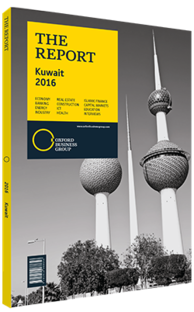Recent regulatory reforms seek to enhance liquidity and trading activity at Kuwait Stock Exchange
In early November 2015 the regulator of Kuwait’s capital market, the Capital Markets Authority (CMA), issued a comprehensive set of executive bylaws to the regulatory framework. The revision, officially known as CMA Resolution No. 72 of 2015, comprises 1665 articles governing activity across 16 broad areas, including disclosures, transparency, listings, corporate governance, mergers and acquisitions, and clearing agencies, among others.
Drawn up in response to widespread confusion over the application and enforcement of the Capital Markets Law (CML), which was introduced in 2010, the legislation is an effort to consolidate into a single document all rules relating to securities activities in Kuwait. The introduction of the draft executive bylaws follows on a period of rapid change in Kuwait’s capital market sector, with major implications for the operation and regulation of the Kuwait Stock Exchange (KSE) and the nation’s financial system. “The CMA, which was established as a result of the 2010 law, has worked hard to implement international standards in Kuwait,” Hassan Al Azem, a research consultant at the Kuwait-based investment bank The International Investor (TII), told OBG. “But as the regulator has learned over the past six years, these things take time. The new legislation reflects that.”
Reform Drivers
The new bylaws reflect an effort on the government’s part to revitalise the KSE after a period of falling returns. After a decline of 13% in 2014, the KSE price index dropped another 14% in 2015, largely on the back of continued volatility in global oil markets. While oil and gas securities accounted for just 1.1% of the total value of the exchange at the end of 2015, in Kuwait – as in many other Gulf countries – the energy sector is closely linked to government spending, financial sector performance and most other aspects of the domestic economy. In 2015 all but two of the KSE’s sector indices reported losses. The banking index, which accounts for around 50% of the KSE’s overall market capitalisation, fell off by 10% over the course of the year. The health care and insurance indices, meanwhile, grew by 3.8% and 4.6%, respectively, in the same period.
Slowing trading activity and low valuations have caused some firms to exit the market. From the beginning of 2014 through to late September 2015, around 24 companies delisted from the exchange, citing the low market value of their shares and sluggish daily turnover. In the same period an additional five companies were delisted by the KSE due to accumulated losses or as a result of the extended period of time their shares were suspended, usually due to a lack of capital. Indeed, by most metrics the KSE has not seen as much activity as other markets in the region in recent years. From 2013 through to the end of 2015 the KSE has attracted no initial public offerings, compared to 14 in Saudi Arabia, four in the UAE and eight in Oman, for instance.
A Regulatory Boost
The executive bylaws were designed to address these and other hurdles to stronger performance at the KSE. The legislation, which was developed by the CMA over the course of four years in conjunction with a range of market participants, seeks to consolidate the original rules and regulations laid out in the 2010 CML with the numerous amendments and clarifications to that law (and others) put forward since. The bylaws are therefore comprehensive, with implications for every aspect of the operation of Kuwait’s capital market. “The new framework adopts the best international practice in regulating the capital markets, and keeps up with rules implemented in the advanced markets, such as the UK and the EU, as well as being consistent with International Organisation of Securities Commissions’ regulations,” said Nayef Al Hajraf, chairman and managing director of the CMA, in a speech announcing resolution 72. The transition to the new framework is scheduled to be complete by May 2017.
You have reached the limit of premium articles you can view for free.
Choose from the options below to purchase print or digital editions of our Reports. You can also purchase a website subscription giving you unlimited access to all of our Reports online for 12 months.
If you have already purchased this Report or have a website subscription, please login to continue.

